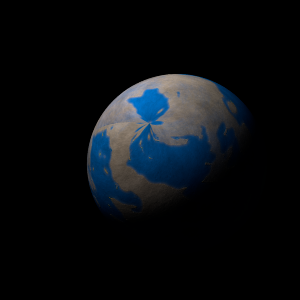|
|
Space Astro
|
Info for exoplanet "Nama"
| Scientific (actual) data |
|---|
| Planet | Kepler-400 b |
| Planet status | Confirmed |
| Radius | 0.147 |
| Orbital period | 9.02439 |
| Semi major axis | 0.087 |
| Discovered | 2014 |
| Updated | 2021-02-05 |
| Tconj | 2454970 |
| Impact parameter | 0.01 |
| Publication | Announced on a website |
| Detection type | Primary Transit |
| Alternate names | 2MASS J19234667+4028481 b, K02711.01, KIC 5272233 b, KOI-2711 b, KOI-2711.01, WISE J192346.67+402848.0 b |
| Star name | Kepler-400 |
| Right ascension | 290.94° |
| Declination | 40.48° |
| Mag j | 12.566 |
| Mag h | 12.289 |
| Mag k | 12.296 |
| Star distance | 709 |
| Star metallicity | 0.009 |
| Star radius | 1.15 |
| Star temperature | 5886 |
| Star alternate names | 2MASS J19234667+4028481, KIC 5272233, KOI-2711, WISE J192346.67+402848.0 |
| Wikipedia article | Kepler-400 b |
Back
| |
| Fictional info (?) |
|---|
| Suggested name | Nama |
| Planet type | Warm planet |
| Nama has been known to astronomers since the beginning of the space age. The planet is named after the deity Nama, the demon of dreams.
It is radically different from Fugyaga in other respects.
As the closest planet to Fugyaga, Nama has been a prime target for early extra solar exploration. It was the one of the first exoplanets visited by a spacecraft, and one of the first to be successfully landed on. Plans have been proposed for rovers or more complex missions, but they are hindered by Nama's hostile surface conditions.
It may also have a rocky core of heavier elements, but like the other warm planets, Nama lacks a well-defined magnetic field. |
| Atmosphere | Ammonia | 82% |
| Argon | 17% |
| Atmospheric pressure | 0.002 bar |
 |
| No known satellites |
| Google search for Nama |
|
Website by Joachim Michaelis
|
|
|
|